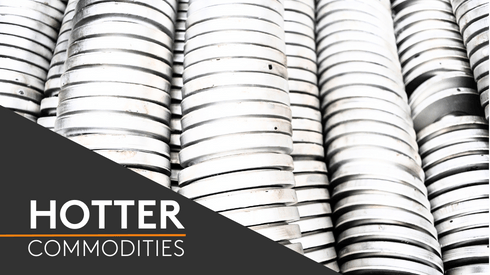“The electrification of the automobile industry should not come at the expense of escalating electricity costs and overloading the power grid with fossil fuels. Greater efforts should be taken to drive a truly sustainable future where electric vehicle charging points should be powered by renewable sources. Only then will the idea of zero-emission mobility truly benefit our planet,” Kumar said.
 Such sustainability questions have highlighted the need for long-duration energy storage solutions that can accommodate larger capacities of renewable energy, such as vanadium redox flow (VRF) batteries, which store their energy in tanks.
Such sustainability questions have highlighted the need for long-duration energy storage solutions that can accommodate larger capacities of renewable energy, such as vanadium redox flow (VRF) batteries, which store their energy in tanks.
Kumar, the founder and chief executive of Singaporean battery tech start up VFlowTech, is working on developing the world’s most affordable and reliable modular VRF batteries in the world and has set his sights on creating safe, grid-scale energy storage, which is superior to lithium-ion batteries in terms of reduced carbon dioxide emissions across the whole life cycle.
VRF batteries use vanadium redox couples in negative and positive half cells, in which electrochemical reactions cause electrons to move between vanadium ions at different charging states, causing chemical energy to be converted to electrical energy and vice versa.
The tanks enable a much larger energy storage capacity because vanadium electrolytes can be recycled more easily than other battery chemistries, Kumar said.
VRF batteries are also more flexible and can be scaled to fit the battery’s power storage and energy requirements. This also means the size of the battery stack and the volume of electrolyte stored in tanks can be adjusted.
“Vanadium redox flow batteries can also operate at much wider temperature ranges than others, especially if using electrolyte additives,” Kumar said. “This means that vanadium redox flow batteries can be adapted to industrial-scale applications without having to add extra costs.”
The use of water-based electrolytes in such batteries eliminates the risk of fire, which can be a problem in conventional lithium iron phosphate (LFP) batteries. Up to 90% of the vanadium electrolyte in each battery can also be reused or recycled at the end of its lifetime.
LFP is currently the most widely used battery chemistry in the world, with major carmakers such as Tesla and General Motors already basing their electric vehicle (EV) battery platforms on LFP cells. This is especially the case given supply concerns over nickel and cobalt.
VRF batteries have life expectancies of up to 25 years. They reduce parasitic losses in other battery chemistries such as lithium ferro phosphate, lithium nickel cobalt aluminium oxides and nickel manganese cobalt.
They also do not use cobalt, have a long-lasting charge cycle, and are fast-charging.
VRF batteries in major industries
Kumar identified five use cases for VRF batteries in major industries, including automotive charging, grid services, renewable energy integration, gated communities, and telecom towers.
Stationary electric-car charging infrastructure is a key growth area for VRF batteries, especially as EVs continue to become the main choice of transportation for the world.
“To further bolster the adoption of EVs, it is necessary that EV charging stations have stationary energy storage, which minimizes grid connection power and is safe and environmentally friendly,” Kumar said.
He also pointed out the power grid infrastructure as a use case.
“Conventional power plants have traditionally provided both energy and grid balancing services,” Kumar said. “However, with the increasing proliferation of renewable energy, the grid must now adapt to the larger share of mid-to-low power generation, leaving utilities with the issue of how to perform grid services.”
VRF energy storage systems such as VFlowTech’s Powercube can provide grid services at both transmission and distribution levels.
The third use case Kumar cited was for renewable energy integration for commercial and industrial uses, especially since most renewable power generation is intermittent and requires reliable energy storage. This is particularly critical for small workshops, cold storage, warehouses, rill mills, and bus stations, which typically need reliable power supplies.
Gated communities in emerging economies, including both residential and commercial communities such as hotels, resorts, schools, or business facilities, also need reliable power supplies from renewable energy, unless they fall back on polluting diesel generators.
Telecom towers require reliable power supplies as well, especially given that they are used in remote locations and may face unstable power grids.






